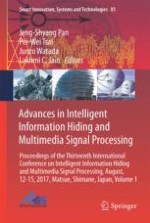2018 | Book
Advances in Intelligent Information Hiding and Multimedia Signal Processing
Proceedings of the Thirteenth International Conference on Intelligent Information Hiding and Multimedia Signal Processing, August, 12-15, 2017, Matsue, Shimane, Japan, Part I
Editors: Dr. Jeng-Shyang Pan, Prof. Dr. Pei-Wei Tsai, Prof. Dr. Junzo Watada, Prof. Dr. Lakhmi C. Jain
Publisher: Springer International Publishing
Book Series : Smart Innovation, Systems and Technologies
